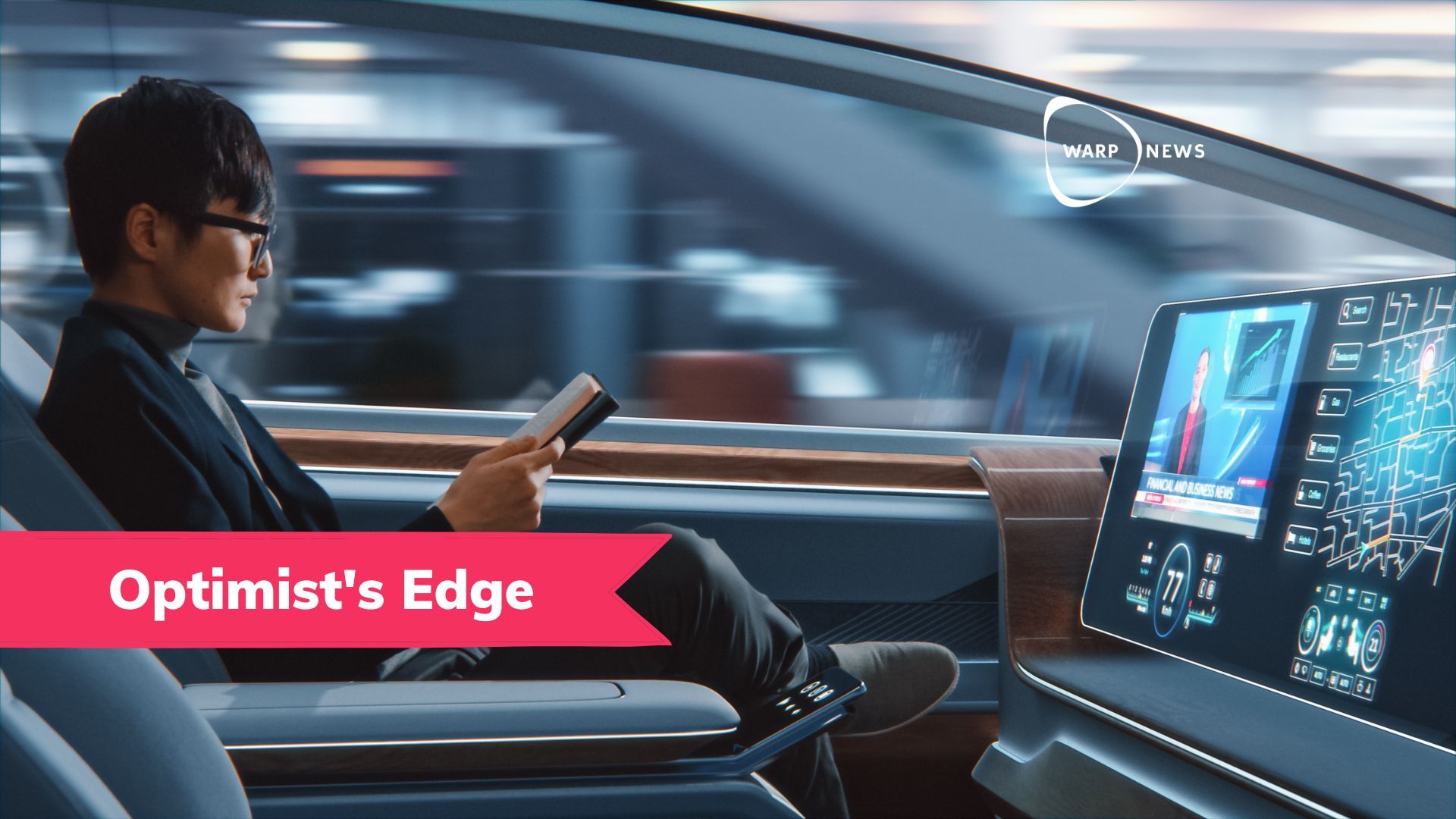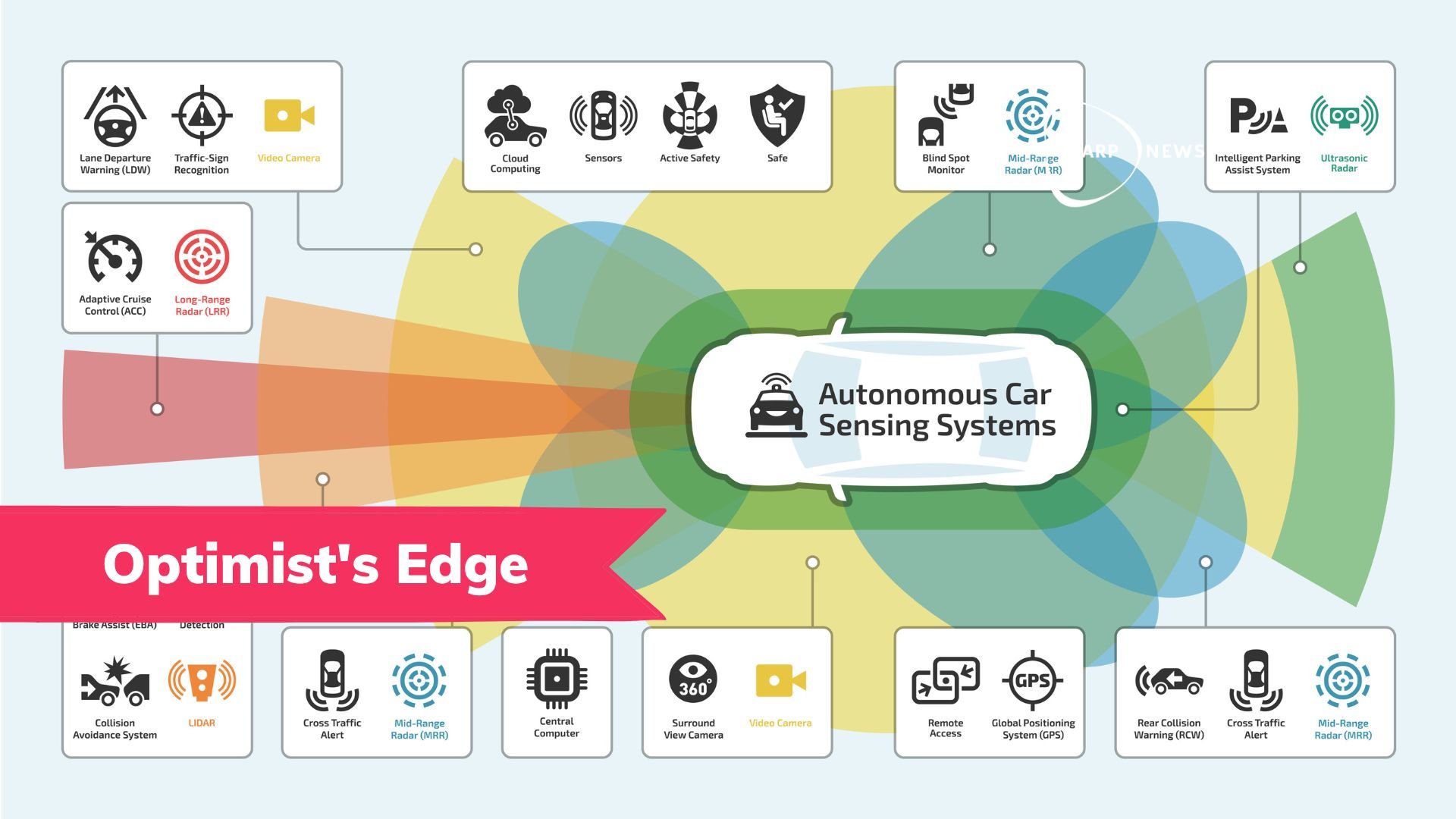
💡 Optimist's Edge: Self-driving cars will be really fast
Few humans can drive at 200 miles per hour, like an F1 driver, and it is very dangerous to do so. But that would be easy peasy for an autonomous vehicle.
Share this story!
Here is the first part in this series:

📉 What people think
If people have seen a self-driving vehicle, it is often something like a neighborhood bus. It travels a specific route, very slowly. Like this one in Stockholm.
Or when a Google Car was stopped by the police, because it drove too slowly.
📈 Here are the facts
The reason they are so slow is partly extreme caution. They are used for limited tests, to learn more, not really to function in traffic
Those cars are also not self-driving in the same way we are talking about in this series of articles. They can only drive specific routes or inside small areas. If you dropped the bus in another part of the city, it would stand still.
- When self-driving cars have reached the level where we are so confident in their capabilities that we can remove the steering wheel, they will be much, much faster.
- The reason is the same as why self-driving cars will be extremely safe: "360° vision, it can with millimeter precision understand what is happening, make lightning-fast decisions and calculate and act based on several possible outcomes."
- Few humans can drive at 200 miles per hour, like an F1 driver, and it is very dangerous to do so. Because of the speed your brain needs to handle a lot more information and make faster decisions. But that would be easy peasy for an autonomous vehicle.
- To get to really high speeds, every car has to be self-driving. At least on that specific road. The cars will have to interact with each other wirelessly. Every car also needs to process information and make decisions at lightning speed. If you add a human-driven car to that, the outcome will be a crash.
- When those conditions are met, all cars on that road could drive really fast.
💡 Optimist's Edge
💡 When all cars on a road are self-driving, they will be able to drive really fast and shorten our traveling times.
Imagine not just really fast human transport, but also goods. Big trucks driving 150-200 miles per hour, with no need to stop for food or sleep. Delivery times (and costs) will drop dramatically.
Specially designed cars, and roads, could make it possible for extremely high speeds of maybe 300 or 400 miles per hour.
👇 How to get the Optimist's Edge
New larger roads, like highways, should already be designed today with this in mind. To start with, one lane could be dedicated to self-driving cars to make the traffic run smoother. If that lane can be closed off for human-driven cars, the speed limit could be higher.
When all cars are self-driving cars, most roads need to be adapted. Different lanes could have different speed limits, and in them, every car drives at the exact same speed.
This is another argument we can use to promote a fast as possible transition to self-driving cars. They will get a lot of pushback from media sensationalism, irrational fears, and political populism. We must show the world the other arguments, like super safe and extremely fast cars.
Mathias Sundin
Editor-in-Chief
Other parts in this series:


By becoming a premium supporter, you help in the creation and sharing of fact-based optimistic news all over the world.



